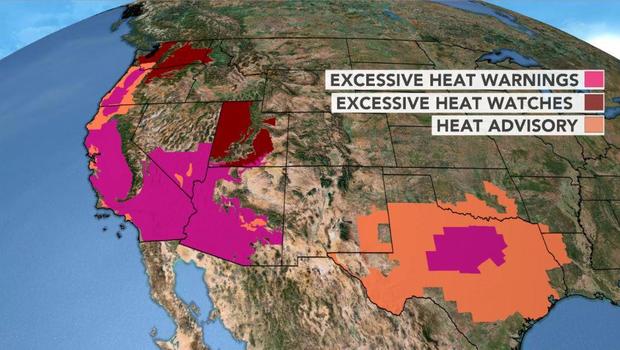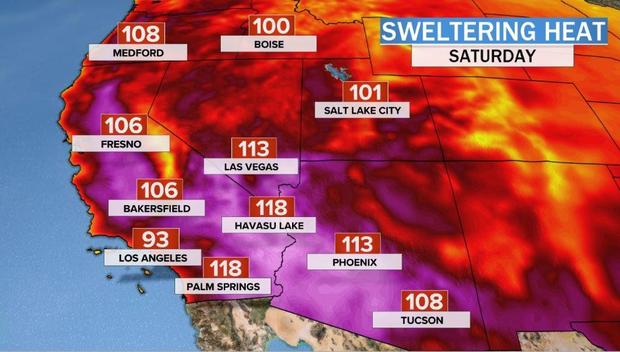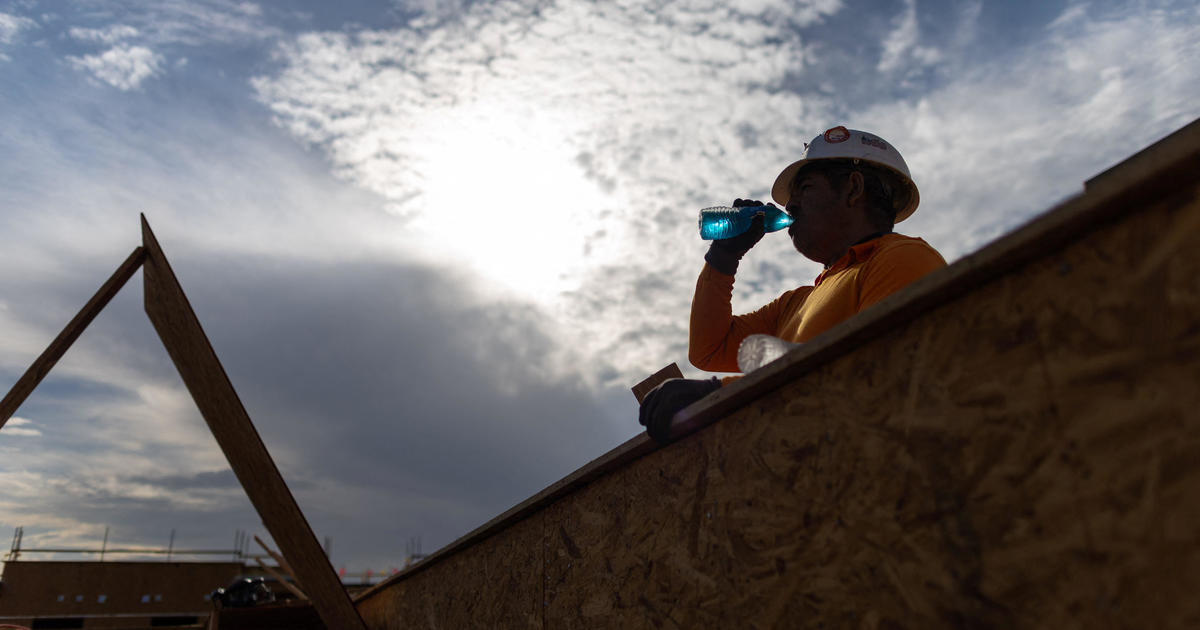Sweltering heat wave bakes the western United States
The most far-reaching heat wave of the summer is now underway across the western states. More than 150 record high temperatures will be challenged through the middle of next week from San Antonio to Sacramento to Seattle.
Excessive heat watches, warnings and heat advisories are in effect for 12 states including most of California. More than 50 million people will swelter in highs over 100 degrees through next week.
After climbing to a scorching 128 degrees on July 11, Death Valley is once again forecast to breach 125 degrees this weekend. And unlike past heat waves, this summer the hot weather will not spare anyone in the region except the immediate coast of California.
Not close enough to the ocean to escape the heat, Los Angeles may hit 105 this weekend. With the fast-moving Lake Fire raging in the mountains 50 miles north of the city, firefighters are worried the hot, dry weather will make matters worse. The fire is burning so hot it is causing its own weather with fire whirls and pyrocumulus clouds.
On Friday the heat will stretch from Texas, where highs will be around 105 in various parts of the state, up through the valleys of California, also near 105.
In Phoenix, which has already eclipsed its record for the most days above 110 degrees of any summer on record, highs are expected to top that number every day from Friday through at least next Thursday. In fact, a daily record high temperature is in jeopardy of being topped every day from Saturday through Wednesday.
Overall, Phoenix is having its hottest summer on record.
While there are many factors that help explain the record hot summer in the deep Southwest, there are a couple that stand out. While summers are certainly not wet in the deserts of Arizona, the state does typically have a summer monsoon season when enough moisture rolls in from the tropical Pacific Ocean to spark up scattered afternoon thunderstorms.
However, partly due to a lack of the wet El Niño and instead a developing drier La Niña, this summer the monsoon has failed in Phoenix. The city is registering its driest atmosphere in the 20 years this particular record has been kept. In a feedback loop, dry air and sun leads to hotter temperatures, which leads to drier air.
In the longer term, a groundbreaking study from this spring revealed the western U.S. is in the midst of one of its driest 20-year periods in history and has now entered a megadrought, among its worst in the last 1,200 years. The authors say this is due to a dry natural cycle combined with human-caused climate change.
In fact, the climate is warming in the deep Southwest faster than any other area of the lower 48 states. Since 1970, average temperatures there have risen by 4 to 6 degrees Fahrenheit. This helps explain why, even though there's still more than a month to go in summer, Phoenix has already shattered its record number of 110+ degree days.
The cause of the current heat wave is a giant ridge of hot air, also known as a heat dome, in the mid- and upper levels of the atmosphere, redirecting the jet stream and cooler air into the eastern half of the nation. Statistically speaking, the core of the heat dome is forecast to intensify to 3 standard deviations above the mean, meaning it is more intense than 99.8% of such events in the history of that area.
This heat dome will drive the heat all the way north to Idaho and Oregon, where cities like Boise and Medford will top 100 degrees on Saturday and Sunday. The valleys of California, from Bakersfield to Fresno and Sacramento, will range from 105 to 110.
The West is not alone in having an unusually hot summer. NOAA, the National Oceanic and Atmospheric Administration, put out its monthly report this week finding July was the hottest on record in the Northern Hemisphere.
Copernicus, the European Union's Earth observation program, also released its monthly report finding that through the last 12-month period, Earth's average temperature was nearly 1.3 degrees Celsius above pre-industrial levels. That's only 0.2 degrees away from exceeding of the first goal of the Paris Agreement, which is to limit the globe's warming to 1.5 degrees Celsius.
Recent research shows that since the 1950s, heat waves globally are getting significantly more frequent, lasting longer and producing more cumulative heat — making populations more vulnerable to heat stress. In the U.S. this is especially true in the West, where a 2018 study from NOAA found that climate change will surpass natural patterns this decade as the main cause of heat waves.
The current heat dome will remain strong and in place through at least midweek and then finally begin to shrink and weaken by the end of next week.







